An intelligent sensor is a sensor with information processing function. Smart sensors with microprocessors have the ability to acquire, process, and exchange information, and are a combination of sensor integration and microprocessors. Compared with general sensors, smart sensors have the following three advantages: high-precision information acquisition through software technology, and low cost; with certain programming automation capabilities;
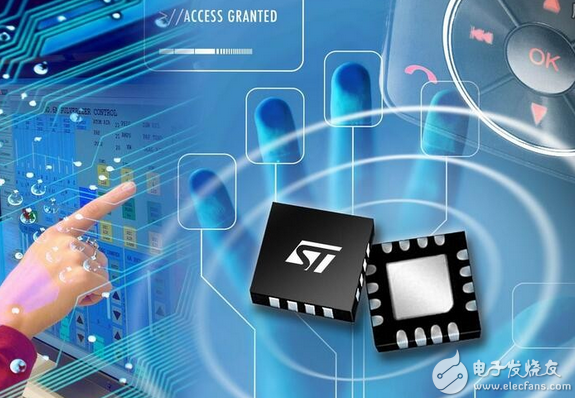
A good 'smart sensor' is a microprocessor-driven sensor and instrument kit with communication and onboard diagnostics.
Smart sensors store the various physical quantities detected and process the data as instructed to create new data. Intelligent sensors can exchange information and self-determine the data that should be transmitted, discard abnormal data, complete analysis and statistical calculations.
The "Three-Year Action Plan for Promoting the Development of a New Generation of Artificial Intelligence Industry" issued by the Ministry of Industry and Information Technology has pointed out the direction for the development of artificial intelligence from 2018 to 2020. The focus of the plan is to cultivate eight smart products and four core foundations, and smart sensors are ranked first in the core foundation, in the most basic and important position.
Everything connected technology chain
How are sensors, big data, machine learning, artificial intelligence, and robots screwed together? In the era of artificial intelligence, hardware and software are symbiotic and evolved, affecting each other?
“Internet of Thingsâ€, “Big Data†and “Robotsâ€, etc., these trends are actually related to each other and twisted into a general trend. In this chain, each ring will have an impact on the next ring, thus generating positive The loop. The sensors in the various connected devices generate a lot of data. Massive data makes machine learning possible. The result of machine learning is AI. The AI ​​instructs the robot to perform tasks more accurately, and the robot's actions trigger the sensor. This whole is a complete cycle.
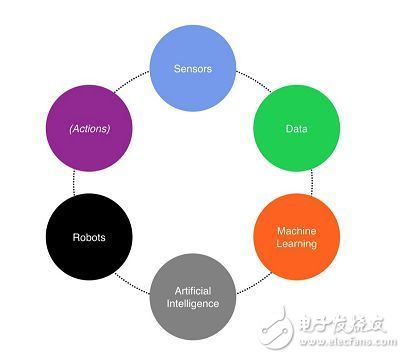
1. Sensor generates data
By 2014, the number of devices connected to the Internet exceeded the total population of the world. Cisco predicts that by 2020, there will be 50 billion interconnected devices. Most of these devices have sensors, either with Electric Imp embedded sensors or with Estimote external sensors.
Sensors in the device produce unprecedented amounts of data.
2. Data support machine learning
In 2020, 35ZB of data is expected to be generated, which is 44 times the amount of data in 2009. At that time, whether structured or more structured data can be processed by the machine, resulting in a lot of insights.
3. Machine learning improves AI
Machine learning relies on data processing and pattern recognition so that computers can learn without programming. Today's massive data and computing power are driving breakthroughs in machine learning.
The full power of machine learning, look at Google to know.
Google is using machine learning to map the location of every business in France, every house, every street on the map. The whole process takes only one hour.
4. Artificial intelligence guides robot action
As computers have done better than humans in chess and road signs, we have reason to expect more from the future. As more sensors collect more and more data, this optimizes more machine learning algorithms, so we can logically infer that the ability of a computer combined with a robot to perform tasks will grow exponentially.
5. Robots take action
Not only do hundreds of companies make robots that can do all kinds of work, but the robot itself becomes smarter, and with the advancement of AI, it can accomplish many of the tasks we dream of.
6. Action trigger sensor
The machine takes action to trigger the sensor to collect the data so that the entire cycle is complete.
This is the technology chain of the entire artificial intelligence ecosystem.
Artificial intelligence technology optimizes sensor system
Artificial intelligence technology can help sensor systems: knowledge-based systems, fuzzy logic, automated knowledge gathering, neural networks, genetic algorithms, case-based reasoning, and environmental intelligence. These technologies are becoming more widely used in sensor systems, not only because they are really effective, but also because today's computer applications are becoming more popular.
These artificial intelligence technologies have the lowest computational complexity and can be applied to small sensor systems, single sensors, or systems with low-capacity microcontroller arrays. Proper application of artificial intelligence technology will create more competitive sensor systems and applications.
Other technological advances in the field of artificial intelligence will also impact sensor systems, including data mining technologies, multi-agent systems, and distributed self-organizing systems. Environmental sensing technology integrates many tiny electronic processors and sensors into everyday objects to make them intelligent. They can create smart environments, communicate with other smart devices, and interact with humans. The advice given can help users complete tasks more intuitively, but the consequences of this integration technology will be difficult to predict. This technology can be used to the extreme with a combination of environmental intelligence and multiple artificial intelligence technologies.
Create smarter sensor systems
The sensor system can be optimized using artificial intelligence. Artificial intelligence, a branch of computer science, emerged in the 1950s. It has produced many powerful tools that have a huge role in sensor systems and can automatically solve problems that would otherwise require human intelligence.
While the process of artificial intelligence entering the industrial sector is slow, it will certainly lead to improvements in flexibility, reconfigurability and reliability. New system devices have outperformed human performance in more and more tasks. As they get closer to humans, we combine the human brain with computer power to negotiate, analyze, infer, communicate, and invent.
Artificial intelligence combines a variety of advanced technologies to give machines the ability to learn, adopt, and make decisions, giving them new capabilities. This achievement relies on neural networks, expert systems, self-organizing systems, fuzzy logic, and genetic algorithms. Artificial intelligence technology extends its application to many other areas, some of which require the analysis and processing of sensor information, such as assembly. , biosensors, building modeling, computer vision, cutting tool diagnostics, environmental engineering, force sensing, health monitoring, human-computer interaction, network applications, laser milling, maintenance and inspection, power assist, robotics, sensor networks and remote control operations and many more.
These advances in artificial intelligence have been introduced into more complex sensor systems. Clicking on the mouse, tapping the switch, or thinking in the brain will turn any sensor data into information and send it to you. Recently, this research has been successful, and artificial intelligence can help sensor systems in the following seven areas.
1. Knowledge-based systems
A knowledge-based system, also known as an expert system, is a computer application that integrates a large number of problem solutions associated with a particular domain.
Expert systems usually have two components, a knowledge database and an inference mechanism. The knowledge database expresses the various knowledge in this field in the form of "if-then", plus various factual statements, frameworks, objects and cases. The inference mechanism operates on the stored knowledge to produce a solution to the problem. Knowledge operations methods include inheritance and constraints (in framework-based and object-oriented expert systems), retrieval and adoption of cases (case systems), and application inference rules (rule systems), depending on certain control procedures (forward or reverse) Link) and search strategy (depth-first or breadth-first).
A rule-based system describes the knowledge of the system as a "if-then-other" form. Special knowledge can be used on the side. These systems are good at presenting knowledge and making decisions in a human-savvy form.
They are not good at dealing with uncertain tasks and inaccurate scenarios due to strict rule restrictions. A typical rule system has four components: a rule list or a rule database (a special form of knowledge database), an inference engine or parser (inferring information or taking action based on input and rule databases), temporary work memory, user interface, or Other interworking methods with the outside world receive and send incoming and outgoing signals.
The case-based reasoning method is based on the experience of past problems to solve existing problems. This solution is stored in a database as a summary of the experience of human experts. When an unprecedented problem occurs in the system, it compares the problem with past problems and finds a case that is most similar to the existing one. Then follow the previous solution to solve the problem and update the database according to success and failure. Case-based reasoning systems are often considered to be an extension of the rules system. They are good at presenting knowledge in a human-savvy form, with the ability to learn from past cases and generate new cases.
2. Case-based reasoning
Case-based reasoning forms four steps for computer applications:
1. Search: Give the target problem and retrieve relevant cases from memory to solve the problem. The case includes questions, solutions, and comments on how the solution was obtained.
2. Reuse: Map the solution from past cases to target issues. This process includes adaptability changes to new scenarios.
3. Modification: After mapping the solution from the past case to the target scenario, test whether the new solution works in the real world (or simulation scenario) and modify it if necessary.
4. Retention: If the solution successfully solves the target problem, store the solution in memory as a new case.
The argument for this approach is that it adopts some unsubstantiated evidence as the primary operating criterion. Without statistical data as a support, it is difficult to ensure the accuracy of the conclusions. All reasoning based on small amounts of data is considered unsubstantiated evidence.
The purpose of the concept based on case-based reasoning is to apply solutions to past problems to current problems. This solution is stored in a database as a summary of the experience of human experts. When an unprecedented problem occurs in the system, it compares the problem with past problems and finds a case that is most similar to the existing one. Then follow the previous solution to solve the problem and update the database according to success and failure.
Case-based reasoning systems are generally considered to be extensions of the rules system. Similar to the rule system, the case-based reasoning system is good at presenting knowledge in a human-savvy way. Not only that, the case-based reasoning system also has the ability to learn from past cases and generate new cases. Figure 1 shows a case-based reasoning system.
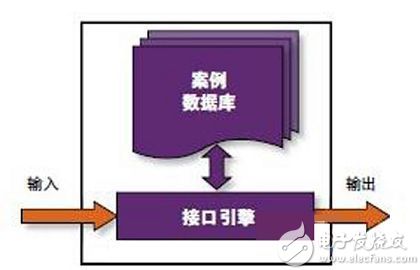
Figure 1 is a case-based reasoning system. Like a rule-based system, a case-based reasoning system excels at presenting information in a human-savvy manner. At the same time, the case-based reasoning system also learns from past cases and creates new ones. The ability of the case.
Many expert systems have been redeveloped using a program called the "shell", an expert system equipped with complete inference and knowledge storage devices but without knowledge in the relevant fields. The construction of some complex expert systems relies on the "development environment", which is more flexible than the shell application, providing users with the opportunity to build custom judgments and knowledge presentation methods.
Expert systems are probably the most mature of these technologies, with many commercial shell systems and development tools available. Once the knowledge in a certain domain is imported into the expert system, the process of building the entire system is relatively simple. Because the expert system is easy to use, it is widely used. In sensor systems, there are many application areas, including sensor input, analytical signals, condition monitoring, fault diagnosis, machine and process control, machine design, process planning, production planning, and system configuration. The application of expert systems also includes assembly, automatic programming, control of complex intelligent vehicles, inspection planning, predictive hazards, selection tools and machining strategies, process planning and plant expansion controls.
3, fuzzy logic
One of the disadvantages of the general rule expert system is that it cannot cope with situations beyond the knowledge database. When this happens, these rule systems cannot give results. When these situations occur, the system will “downâ€, rather than the performance degradation of human experts in the face of new problems.
The use of fuzzy logic introduces the stereotyped judgment and inaccurate characteristics of human judgment, which can improve the adaptability of the expert system. Fuzzy logic turns a variable value into a linguistic description. The meaning of these descriptions is a fuzzy set, and the judgment is based on these expressions.
Fuzzy expert systems use fuzzy logic to deal with the uncertainty caused by incomplete data or partially corrupted data. This technique uses the mathematical theory of fuzzy sets to simulate the process of human judgment. Humans can easily deal with unclear situations (grey zones) in the decision-making process, which the machine thinks is difficult. Figure 2 shows the architecture of a fuzzy logic controller.
Figure 2 shows the architecture of a fuzzy logic controller.
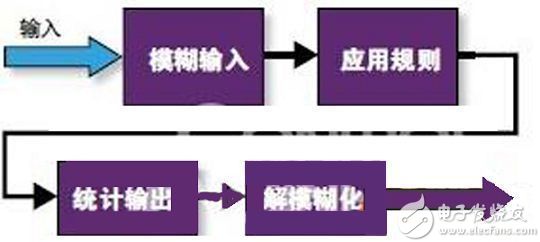
Fuzzy logic has many applications in sensor systems because the knowledge in this category is not accurate. Fuzzy logic is ideal for areas where structures and objects cannot be precisely matched, where resolution is limited, digital reconstruction methods, and image processing. There are applications of fuzzy sets in the field of structural object recognition and scene analysis. The fuzzy expert system is suitable for situations where uncertainty and inaccuracy are required to be handled. They don't have the ability to learn, because the key parameters of the system are already preset and cannot be changed.
Fuzzy logic has been successful in the field of collaborative robotics, automotive robotics, perceptual prediction, supply chain management, and welding.
4, automatic knowledge acquisition
Collecting knowledge in a certain domain to build a knowledge database is very complex and time consuming, and it is often the bottleneck in building an expert system. Automatic knowledge collection techniques were developed to address this issue. This learning process usually requires multiple cases as input for learning. Each case has multiple attribute parameters and is categorized by type. One method is to adopt the "divide and conquer strategy", filter various attributes according to a certain strategy, divide the original case set into sub-collections, and then summarize the learning program to establish a decision tree and correctly classify the given case set. Decision trees can express what knowledge is generated from a particular case in the collection. This method can also be applied later to handle situations that are not covered by the case set.
Another method is called “coverage methodâ€. The goal of the inductive learning program is to find a set of attributes that are held together by a certain type of case, and use this common attribute as the “if†part to make the type For the "then" part. The program removes the cases in the collection that match the rules until there are no common attributes.
Another way to use logic programs instead of propositional logic is to describe the case and then present a completely new concept. This approach uses more powerful predictive logic to describe training cases and background knowledge, and then express new concepts. Predictive logic allows the use of different types of training cases and background knowledge, which allows the results of the induction process (inductive concepts) to be described in the form of first-order clauses with variables, not just zero-order propositions consisting of attribute-value pairs sentence. There are two main types of such systems. The first is the induction/summary method from top to bottom, and the second is the principle of reverse analysis.
There have been a lot of learning programs, such as ID3, which is a divide-and-conquer strategy program; the AQ program uses the overlay method; the FOIL program is the ILP system that uses the induction/summary method; the GOLEM program uses the reverse analysis method. ILP system. While most programs produce explicit decision rules, there are some algorithms that generate fuzzy rules. The requirement to provide case sets (clear attributes and unambiguous classifications) in a rigorous format is easily met in sensor systems and sensor networks, so automatic learning techniques are widely used in sensor systems. This type of learning is suitable for those properties that are represented in discrete or symbolic form, and not for sensor system cases with continuous attribute values. Some examples of inferential learning applications include laser cutting, ore detection, and robotic applications.
Figure 3 shows a virtual system flow diagram showing how the system collects data from an image sensor. Visual data and CAD model data are used together to determine the object list, which is then sent to the weld identification module, which then uses artificial intelligence to clarify the weld requirements.
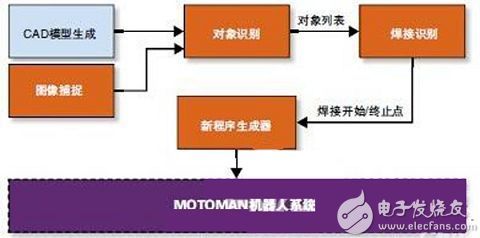
5, neural network
Neural networks can also extract domain knowledge from cases, and the domain knowledge they extract is not described in a characterization manner, such as rules or decision trees, and they can cope with both continuous and discrete data. They also have a good inductive power similar to the fuzzy expert system. A neural network is a computer model of the brain. A neural network model usually assumes that the computational process can be described using a number of simple units called neurons, which can be connected to each other in parallel.
The most common neural network is the multilayer perceptron, which is a feedforward network: all signals are transmitted in one direction, from input to output. The feedforward network is capable of static mapping in the input space and the output space: the output at a certain time only constitutes a functional relationship with the input at this moment. In a periodic network, the output feedback of some neurons will be the same as a neuron or back to the neurons of the previous level. It can be considered as having dynamic memory: the output of such a network at a certain moment is affected by the current input and the previous input and output. .
The "knowledge" that is not explicitly expressed is built into the neural network by training the neural network. Some neural networks can be trained using predefined input patterns to produce the desired output pattern. The difference between the actual output and the expected output is used to correct the strength and weight of the connections between the neurons. This method is called supervised training. In multi-layer perceptrons, the supervised training backpropagation algorithm is usually used to propagate errors from the output neurons and then calculate the correction weights of the hidden layer neurons.
Artificial neural networks typically have inputs and outputs that perform processing tasks at a hidden layer between input and output. Inputs are independent variables and outputs are interrelated. Artificial neural networks are flexible mathematical equations with configurable internal parameters. In order to accurately represent complex relationships, these parameters are adjusted by training algorithms. In the simple training mode, the input case and the corresponding expected output are simultaneously presented to the network, and the self-adjustment process is repeated through as many cases as possible. Once the training is over, the artificial neural network is able to accept new inputs and predict the correct output.
In order to produce an output, the network only needs to be calculated according to the equation. The only assumption is that there is some continuous functional relationship between the input data and the output data. Neural networks are suitable for mapping devices, pattern categorization, or pattern completion (automatic association content addressed memory and pattern correlators).
Figure 4 shows the sensor system recommendations for welding requirements for the weld identification module. This module evaluates the recommendations and determines the best welding trajectory. The suggestion is then sent to the actual robot program generator.

Recent applications include feature recognition, heat exchangers, solder joint inspection, spot welding parameter optimization, power, tactile display, and vehicle sensing systems.
6, genetic algorithm
Genetic algorithms are a random optimization process that is inspired by natural evolution. Genetic algorithms can produce globally optimal solutions in complex multi-directional searches without the specific knowledge of the problem itself. Genetic algorithms have found their place in sensor systems, including complex combinations or multi-parameter optimizations, including assembly, assembly line balancing, fault diagnosis, health monitoring, and power steering.
7, environmental intelligence
Environmental intelligence has grown tremendously in recent decades, witnessing the convenience of humans in a digitally controlled environment where electronic devices can predict their behavior and respond. The concept of environmental intelligence is used to achieve a seamless match between humans and sensor systems to meet actual expected needs. Applications in the industrial sector are still limited, but newer, smarter and more interactive systems are already in the research stage.
Extended system
Artificial intelligence increases the effectiveness of communications, reduces faults, minimizes errors, and extends sensor life. In the past 40 years, artificial intelligence technology has brought a series of powerful tools, as listed above. These tools are increasingly used in sensor systems. Proper adoption of new artificial intelligence techniques will help to build more competitive sensor systems. Due to the strangeness of engineers to this technology and the technical barriers that still exist with these tools, it may take another 10 years for engineers to accept them. However, research in this area will not stop, and many new sensor applications are emerging, and the combination of these technologies will play a greater role.
From the application of smart factories and the implementation of monitoring networks such as power grids, air and highways, the development of sensors has been continuously expanding. After the plan is put to the ground, it is now proposed that artificial intelligence will fly into thousands of households, and household products will become more and more intelligent. The era of Internet of Everything is developing at a rapid pace. In the future, people's lives may be inseparable from the most basic sensors. This is a great opportunity for the sensor industry.
Opportunities are often accompanied by challenges, and the sensor industry is also facing many problems. How to develop sensors that meet market trends and planned requirements? How to make the sensor stand out from the same kind of sensor? Only by following the trend of the times, can we have the right direction and master the core technology, in order to be in an invincible position. For the sensor industry, only by seizing this opportunity and focusing on R&D and market demand can we take it to the next level. .
We are professional manufacturer of retro Bluetooth speakers,our retro speaker high energy density, mini size, light weight and diversified shapes;Excellent fast charging performance, support fast charging and other excellent features with a brand-new design, showing retro nostalgia without losing fashion. It uses a 2.5-inch speaker and has many functions such as FM radio, Bluetooth fast connection, multi-mode switching, and HIFI high fidelity. Wireless Bluetooth 4-10 hours of playback (at 50% volume), which adds to its unique charm.
For Bluetooth retro speakers, I personally think that when many people buy them, the appearance is the first priority and the function is second.
The sound quality of small vintage speakers is also good. It does not have the same large speakers and power as HIFI speakers, and its sound quality cannot compete with large speakers due to physical limitations. But for the vast majority of users who are not golden ears, the use of small speakers with tablets and mobile phones is sufficient to meet their hearing needs.
Mini Cute Retro Speaker,Speaker For Gift,Classic Speaker,Mini Cute Vintage Speaker
Shenzhen Focras Technology Co.,Ltd , https://www.focrass.com